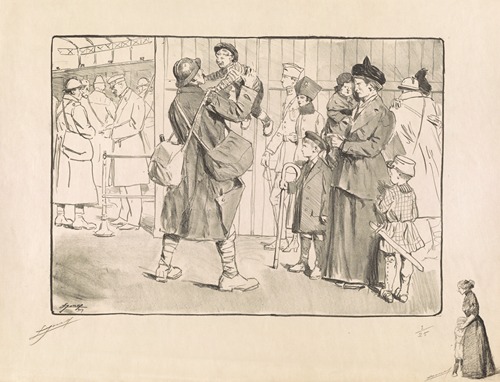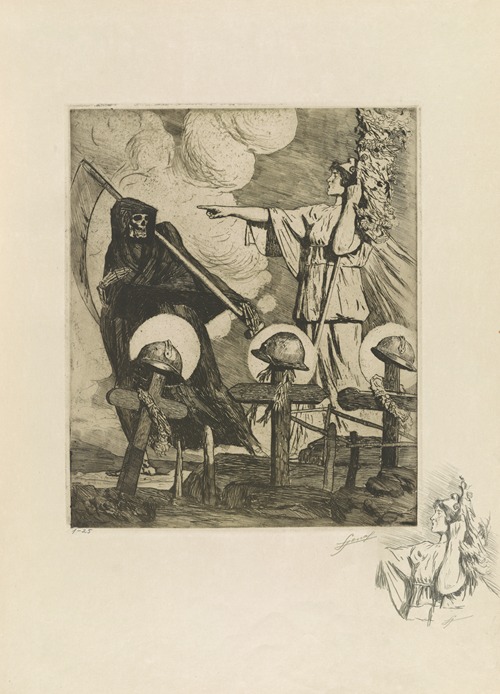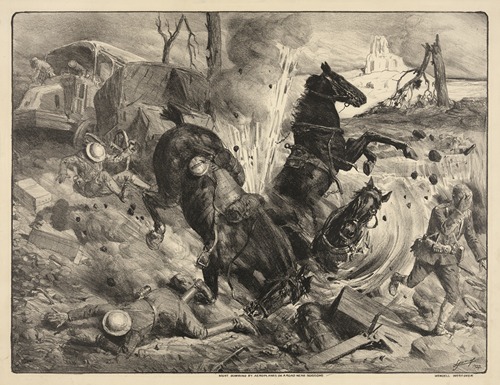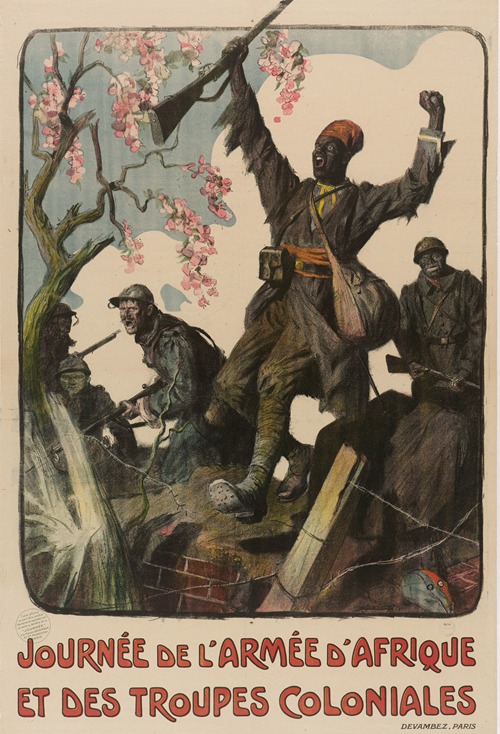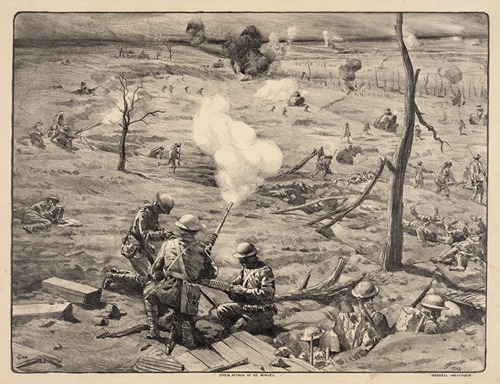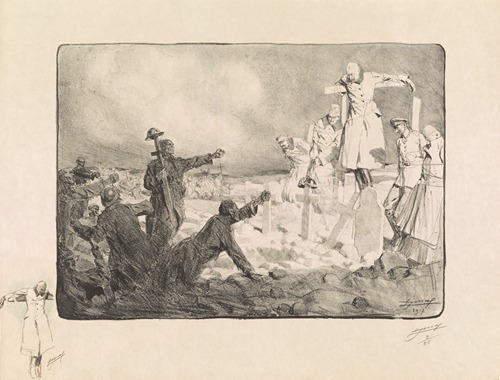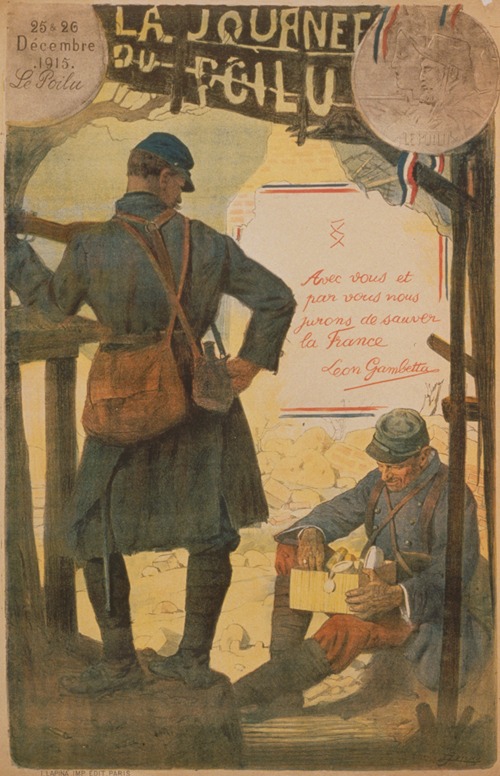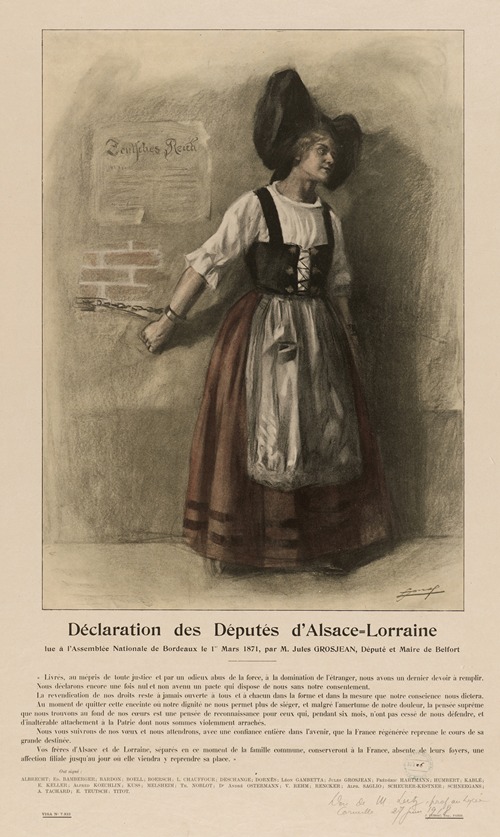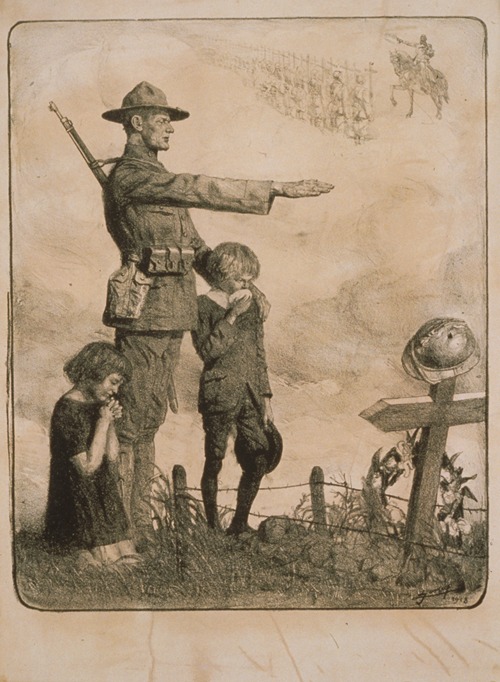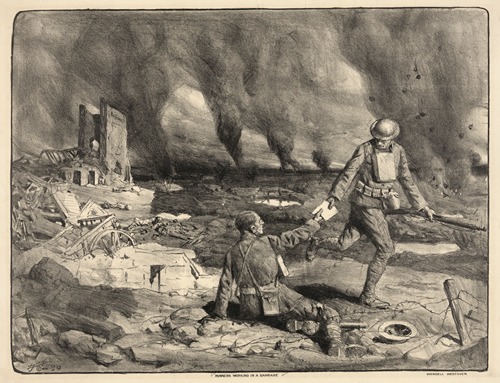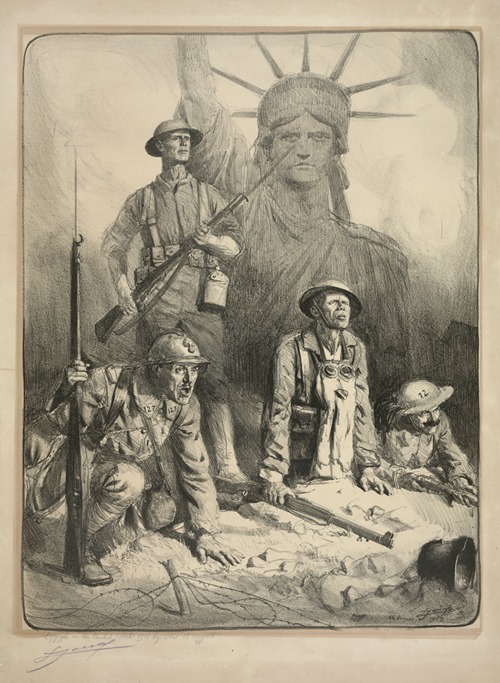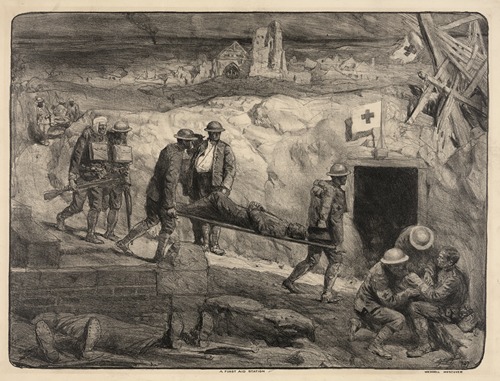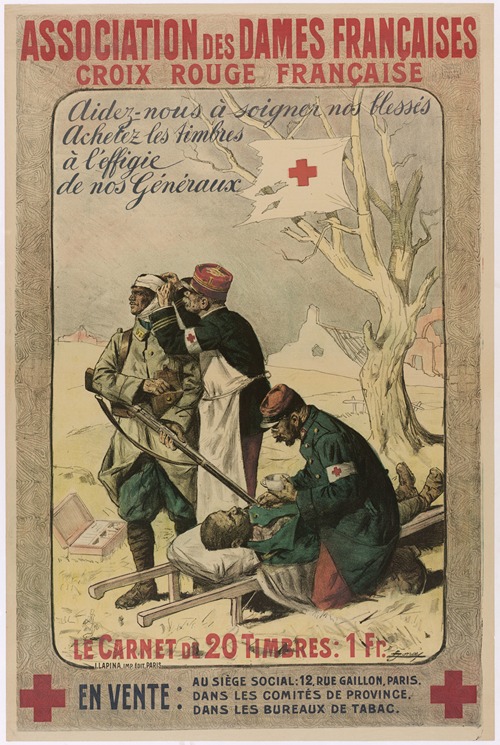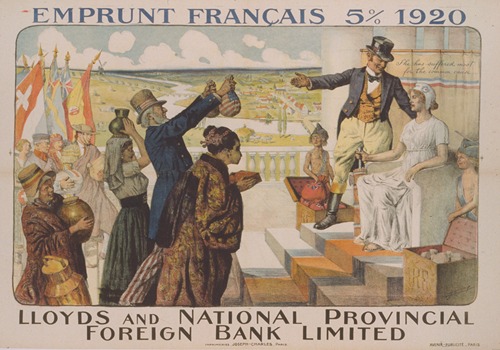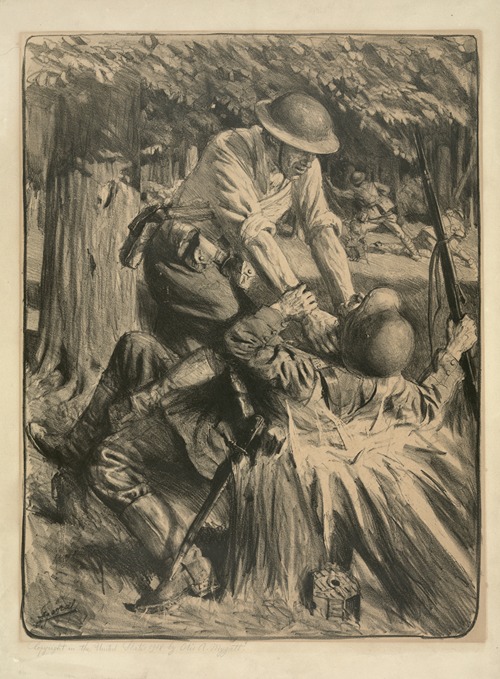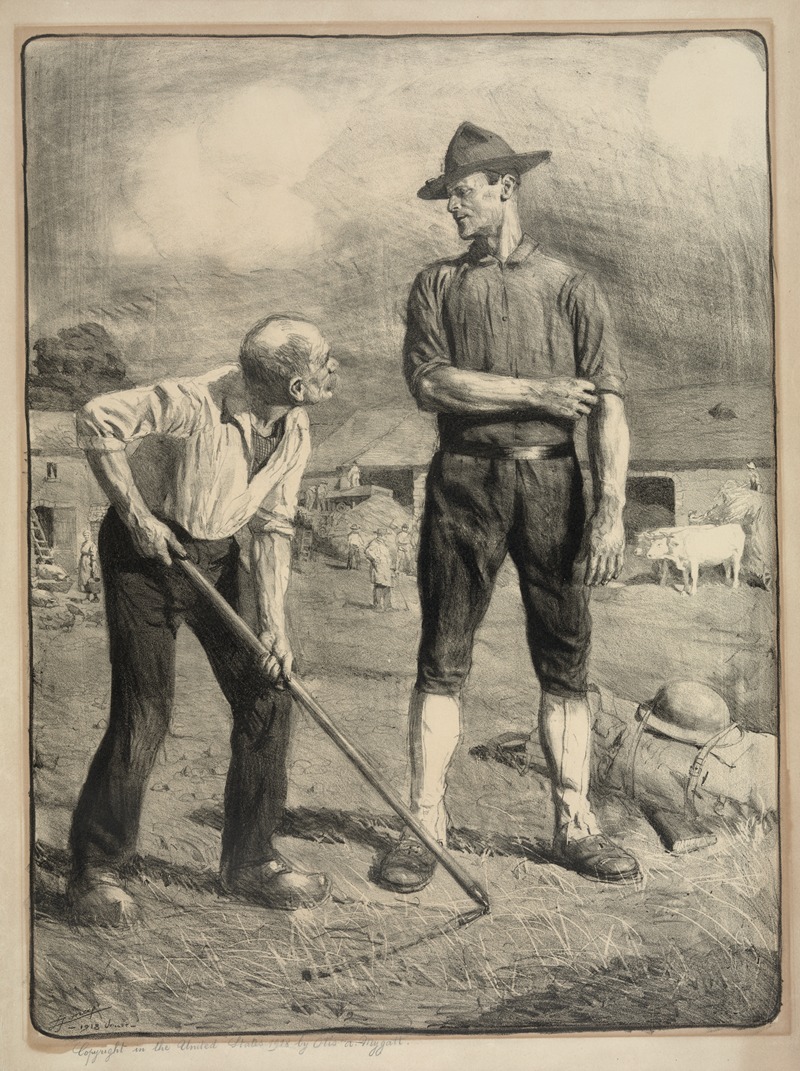
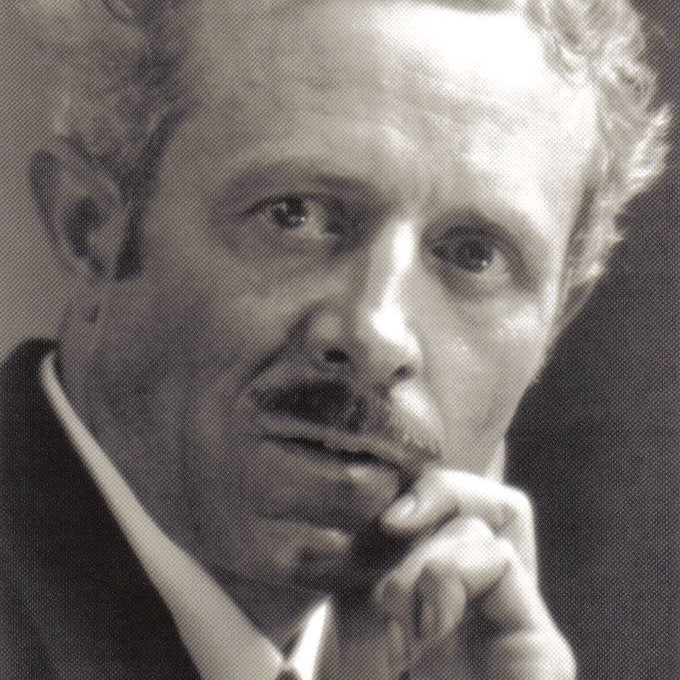
Lucien Hector Jonas was a French painter.
Born on April 8, 1880, in Anzin, into a family of industrialists from the Nord region, Lucien Jonas, a history and genre painter, obtained his baccalauréat ès-lettres in June 1898. He continued his studies in Valenciennes with Joseph-Fortuné-Séraphin Layraud, and also studied music theory and violin for seven years at the Valenciennes Conservatoire.
In 1899, he entered the École des Beaux-Arts in Paris. In 1900, he was admitted for good, and throughout his school years, one prize followed another, bringing him to prominence. He became a member of the Société des artistes français in 1901.
From 1902, Lucien Jonas also worked in the studio of Albert Maignan, with whom he forged a sincere friendship.
At the same time, he met Henri Harpignies, who quickly showed affection for the man he considered his protégé. Harpignies helped develop his love of nature and encouraged him to paint from the motif. On the death of his father on October 2, 1902, Lucien Jonas abandoned the Beaux-Arts and returned to Anzin, to his mother's side, to help run the family distillery, which was later taken over by his brother.
Back in Paris in 1903, he moved into a single-storey studio at 3, rue Lecourbe, overlooking a vast courtyard and made available to him by an architect cousin. He used the vast terrace to paint in the open air.
In 1904, he took advantage of his stays in Anzin and the distillery's vast warehouses to paint large compositions, inspired by the life around him. A mine drama (Les Consolations) won him a silver medal at the 1905 Salon.
Three other prizes - the Chenavard, Trémont and Stillmann awards - gave him further encouragement.
Lucien Jonas was awarded the second Grand Prix de Rome in 1905, but as the first prize was not awarded that year, he was celebrated in Valenciennes with his friend Lucien Brasseur, first Grand Prix in sculpture, and was awarded the gold medal (hors-concours) with a travel grant in 1907.
In 1907, King Rama V of Siam acquired one of his works, entitled Les Rouffions, which is now in the Royal Palace in Bangkok.
On May 2, 1908, Lucien Jonas marries Suzanne Bedorez, daughter of Georges Bedorez, with whom he has three children: Pierre, Solange (wife of René Guillaume, magistrate) and Jacques. The couple moved to boulevard Raspail in Paris. Through this union, he became the brother-in-law of his friend, the painter Jean Bédorez, whose charcoal portrait he painted the year of his marriage.
In February 1915, he was approved as a “military painter attached to the Army Museum”. From mission to mission, he traversed the front, from Belgium to the Vosges, before being commissioned to paint portraits of military leaders such as John French (March 15, 1915), Pershing (August 14, 1917, New York, Metropolitan Museum of Art) and Foch (the day after his appointment as Generalissimo). In all, 700 to 800 oil panels, and almost 4,000 drawings reproduced in large numbers in L'Illustration, Les Annales politiques et littéraires, Lectures pour tous and allied newspapers.
In 1916, he was appointed official painter to the French Navy. The war inspired him to paint much-appreciated compositions for various public buildings. He often depicts the life of miners and the Black Country. He also enjoyed success with Art Deco-style wall decorations, decorating numerous buildings, notably in Paris (Maison des Centraux) and Valenciennes (town hall, chamber of commerce).
In 1923, he contributed his drawings to Jules Mousseron's book (ill. Lucien Jonas), La terre des Galibots : Poésies patoises, Lille, Valenciennes et Denain ou chez l'auteur 2 rue de Villars à Denain, 1923, 147 p., Scènes du pays minier. - Les nouvelles prouesses de Cafougnette - Le voyage au long d'eune fosse -Glossaire du patois “rouchi”.
In 1926, he was named Rosati d'honneur, in 1929, Chevalier de la Légion d'honneur, and on July 6, 1931, Peintre de l'Air.
In 1933, he began working with the Banque de France on banknote designs, including the 10-franc Mineur and 20-franc Pêcheur.
In 1934, three years after the inauguration of the Lille seminary, Lucien Jonas completed a major work to adorn the entrance, a triptych entitled La Réponse des âmes à l'appel du Christ.
In 1937, he created decorations for the Paris Universal Exhibition and the Portrait of Louis de Broglie.
In 1942, he creates a major tapestry cartoon for the Manufacture des Gobelins: Le Travail pour la France.
In 1943, he donates 17 large compositions on the life of the Virgin Mary to the Spanish church on rue de la Pompe in Paris.
In 1944, he painted the portraits of Generals Kœnig and De Larminat (Paris, Musée de l'Ordre de la Libération), as well as that of General De Lattre de Tassigny. He was awarded the Francisque.
He won a medal of honor at the 1945 Salon des artistes français for a fourteen-meter-long painting of some 120 figures, entitled Furor teutonicus.
By 1946, Lucien Jonas was very ill and exhausted. His eyes were inflamed and he dreaded the light. He finishes his fourteen paintings for the Stations of the Cross for the Saint-Martin church in Saint-Amand-les-Eaux.
In August 1947, in La Flèche, after a particularly painful crisis, he painted his last outdoor scenes in his in-laws' garden. He returned to Paris, where he died on September 20 in the 16th arrondissement. He is buried in La Flèche, in a grave located, as he wished, next to those of the soldiers of the Souvenir français.
